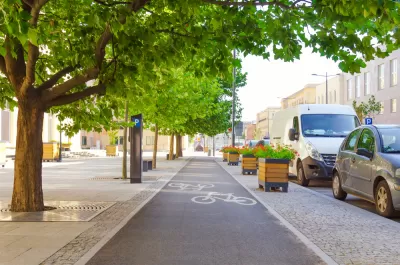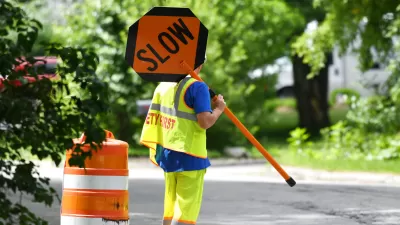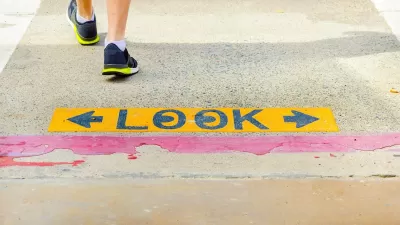A bill named in honor of a U.S. diplomat killed while on her bicycle would let state DOTs access full federal funding for road safety projects.

A federal list of road design elements called “proven safety countermeasures” could hold the key to improved road safety, says former Federal Highway Administration Administrator Shailen Bhatt.
As Kea Wilson explains in Streetsblog USA, “these measures offer safety benefits that have been meticulously proven and quantified by U.S. DOT itself, in the hyper-specific contexts in which traffic engineers might use them — a far higher and more important bar to clear in the bureaucratic world of state DOTs.”
Currently, state DOTs must offer a 10 percent match to receive federal funding for safety projects, meaning they’re often deprioritized in states with low resources. A proposed bill, the Sarah Debbink Langenkamp Act, would allow state DOTs to use 100 percent federal money for safety measures, eliminating the 10 percent local match. “Even as America enters an uncertain new era, supporters of the Langenkamp bill say strategies like protected bike lanes are becoming increasingly normalized in the minds of American transportation officials, thanks in no small part to their status as a proven safety countermeasures.”
According to Wilson, “Increasing state control over how communities make their roads safer is a message that advocates hope a GOP-held Congress can get behind — especially since the bill wouldn't touch a separate federal law that prohibits states from spending more than 10 percent of their total safety money on projects for which the federal government is paying 100 percent of the cost.”
FULL STORY: One Hidden Reason Why Your State DOT Isn’t Building Protected Bike Lanes

Trump Administration Could Effectively End Housing Voucher Program
Federal officials are eyeing major cuts to the Section 8 program that helps millions of low-income households pay rent.

Planetizen Federal Action Tracker
A weekly monitor of how Trump’s orders and actions are impacting planners and planning in America.

Ken Jennings Launches Transit Web Series
The Jeopardy champ wants you to ride public transit.

Opinion: Transit Agencies Must View Service Cuts as Last Resort
Reducing service could cripple transit systems by pushing more riders to consider car ownership, making future recovery even less certain.

‘Smart Surfaces’ Policy Guide Offers Advice for Building and Maintaining Urban Tree Canopies
Healthy, robust tree canopies can reduce the impacts of extreme heat and improve air quality.

New Jersey Lawsuit Targets Rent-Setting Algorithms
The state of New Jersey is taking legal action against landlords and companies that engage in what the state’s Attorney General alleges is illegal rent fixing.
Urban Design for Planners 1: Software Tools
This six-course series explores essential urban design concepts using open source software and equips planners with the tools they need to participate fully in the urban design process.
Planning for Universal Design
Learn the tools for implementing Universal Design in planning regulations.
Heyer Gruel & Associates PA
Ada County Highway District
Institute for Housing and Urban Development Studies (IHS)
City of Grandview
Harvard GSD Executive Education
Toledo-Lucas County Plan Commissions
Salt Lake City
NYU Wagner Graduate School of Public Service





























